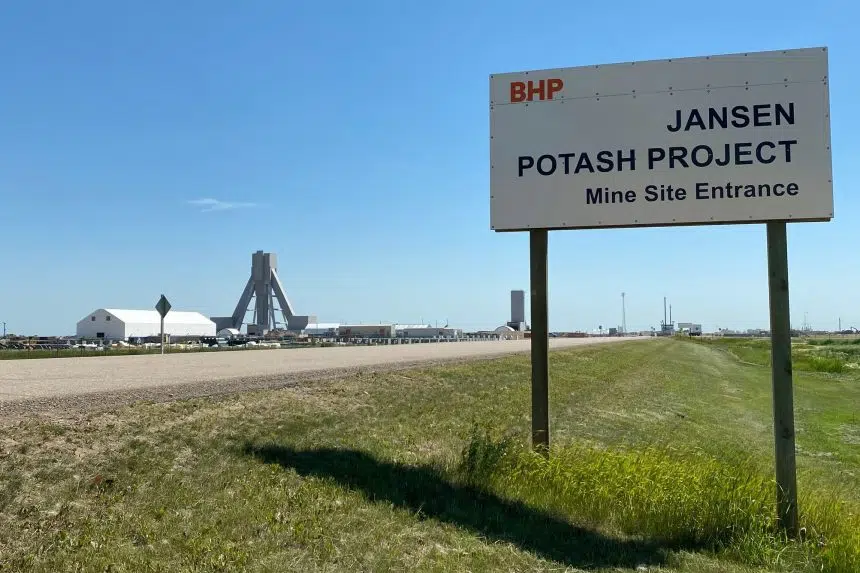Construction of the Jansen mine, east of Saskatoon is believed to be on schedule.
That’s from BHP’s President Simon Thomas who said construction ramped up this summer of what is expected to be the largest potash producing mine in the world.
“Our shaft lining works are complete. We’re now well into feeding our shafts with services in order to think about getting underground and starting underground development,” he said.
Thomas also explained that on the surface of the project it is quite an active site.
“We’ve built up to over a thousand people on our site through the course of the year in construction and we’ll continue to grow this year as we (BHP) keep the balance of our civil works and site works and move towards the more structural mechanical,” he said.
Thomas believes it gives the company going into this year and into the future.
He said through the design of the process and the mining systems the company looks at how it can reduce carbon emissions.
“Our mine will be in the order of 50 percent less in terms of CO2 emissions per production tonne and we also look at water consumption, in particular fresh water consumption,” Thomas explained.
According to Thomas, the mine will 60 percent less reliant on fresh water use per tonne of potash.
This hasn’t changed for when it’s time to go underground.
“Our underground equipment will be battery electric, carbon emitting or reliance on carbon fuels and so 80 percent of our underground equipment will be battery electric, which is a step change for the industry,” Thomas said.
He added that currently the operation workforce employees around 190 people but that will ramp up.
Thomas added that the mine recruitment will start in 2024 and 2024.
He said that the company has a goal of over 20 percent of the long term work force being Indigenous.
“At the moment we are over that 20 percent. Our employees are well represented by our First Nation partners and community members,” Thomas said.
The Jansen Potash mine is $7.5 billion project located in Jansen, which is 140 kilometres east of Saskatoon.
The project was initially confirmed in August 2021 with first stage of the project expected to be done in 2026.











